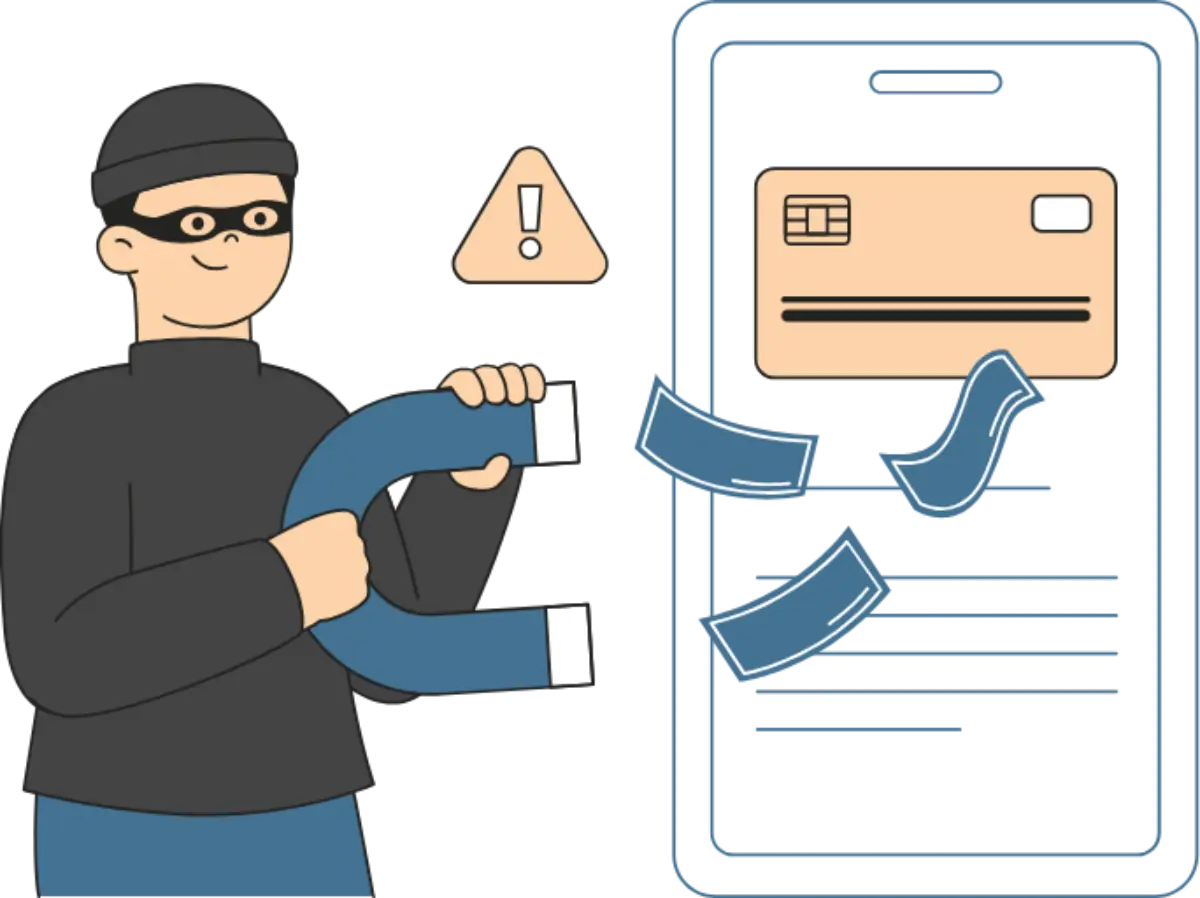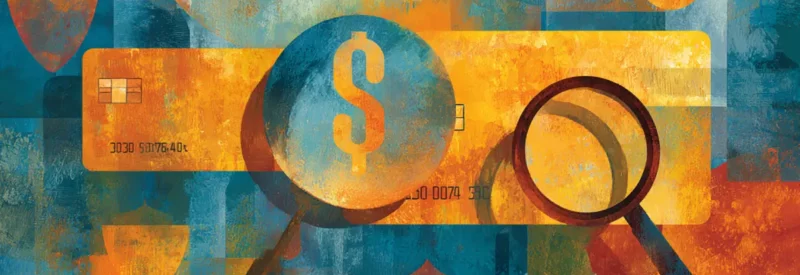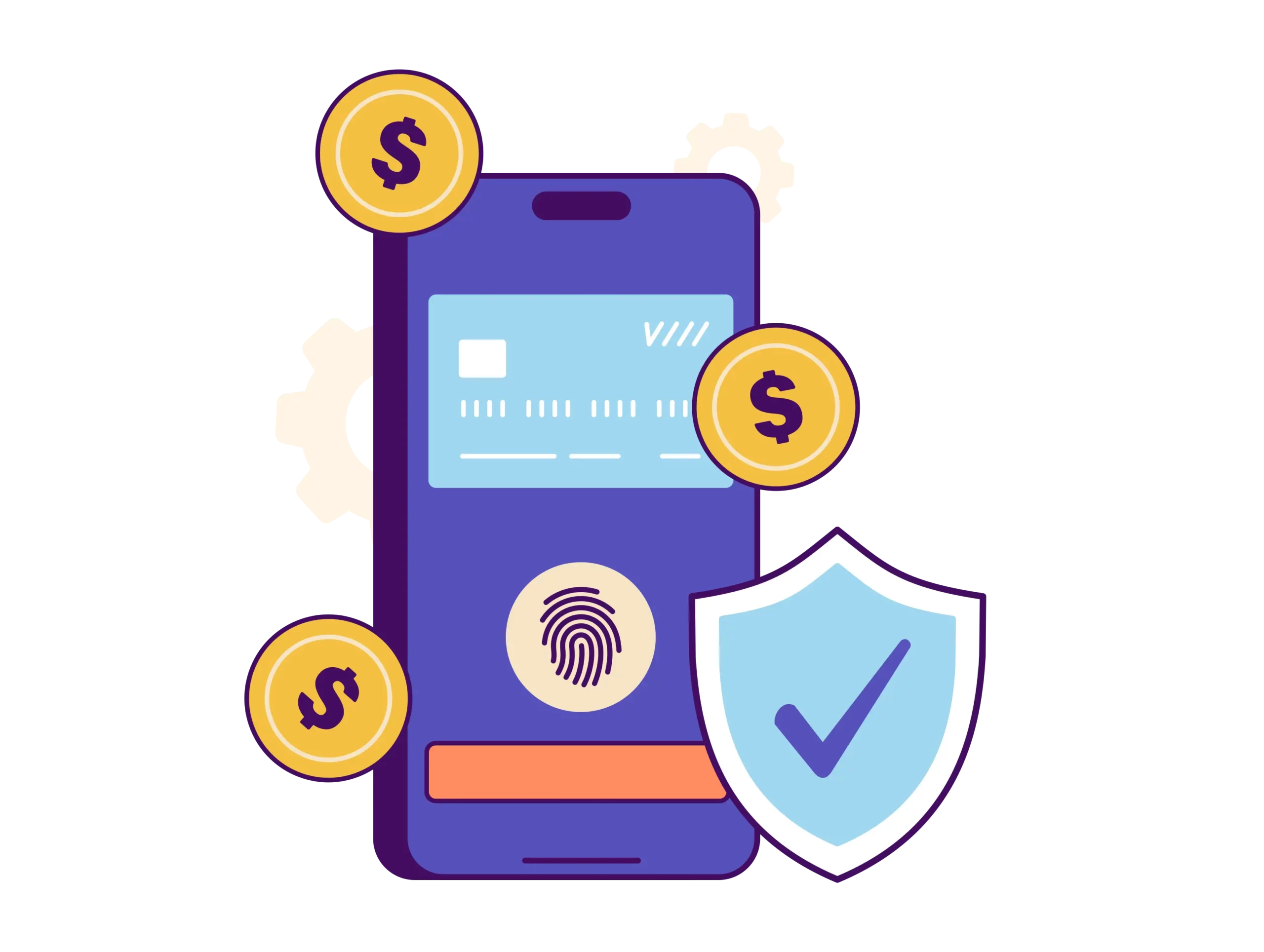Chargebacks are exploding, with the global volume expected to hit 324 million transactions by 2028.[1]MasterCard Ethoca. “The Chargeback Window of Opportunity: Trend Report 2025.” Accessed August 12, 2025. The situation is made worse by the fact that as much as 70% of all credit card fraud can be traced to chargeback misuse.[2]Merchant Risk Council. “2024 Chargeback Field Report: Merchant Survey Reveals Latest Trends, Impacts of Friendly Fraud.” Accessed August 12, 2025. For business owners looking to get ahead of this growing issue, tackling chargeback fraud head-on is a smart place to start. In this guide, we’ll break down the types of chargeback fraud, what businesses are most at risk, and how to protect your bottom line.
Key Takeaways
- True chargeback fraud occurs when criminals use stolen payment information to make unauthorized purchases.
- Friendly chargeback fraud happens when customers intentionally dispute legitimate transactions.
- High-risk businesses face tighter chargeback thresholds and harsher consequences from payment processors.
- Preventing fraudulent chargebacks requires clear policies, strong detection tools, and detailed documentation.
- Excessive chargebacks can lead to higher fees, account freezes, or even termination by your processor.
What Are Chargebacks?
A chargeback occurs when a customer disputes a transaction through their card’s issuing bank, triggering an investigation and potential reversal of the payment.
Chargebacks were created to protect consumers using credit cards from unauthorized transactions or billing errors, but misuse can turn the chargeback system into a merchant’s liability. Stolen cards, unshipped orders, and billing errors — all legitimate reasons for chargebacks. However, some chargebacks may not reflect legitimate consumer protection needs.
Because banks prioritize consumer protection, merchants often face an uphill battle when trying to dispute illegitimate chargebacks. That challenge is precisely what makes chargeback fraud so difficult to manage — it shifts the financial and operational burden onto the business, not the bad actor.
What Is Chargeback Fraud and How Does It Happen?
Chargeback fraud falls into two main categories:

- True Fraud: When someone makes a purchase using stolen card information, both you and the cardholder are victims of a fraudulent transaction. In this case, the defrauded cardholder will file a chargeback for the unauthorized transaction. While the chargeback itself stems from fraud, this is a valid use of the chargeback system.
- Friendly Fraud: This occurs when a customer disputes an authorized transaction. It could be intentional (they kept the product and then disputed it) or accidental (they didn’t recognize your billing descriptor). Even with solid evidence in your favor, you might still lose the chargeback dispute and be hit with hefty fees.
True fraud cases — where criminals use stolen payment credentials — are proper use cases of the chargeback system, as both you and the cardholder are victims. In friendly fraud cases, banks may side with the consumer despite your evidence. And even if you successfully dispute chargeback fraud, you still face chargeback fees and significant time investment.
Common Types of Chargeback Fraud
To implement effective chargeback fraud prevention, merchants must first understand what it is and when it happens. Below, we explore the different types of chargeback fraud with real-life examples to help you spot and stop them.

Friendly Chargeback Fraud
Friendly fraud occurs when customers dispute their own authorized transactions in both deliberate and accidental forms.
Deliberate Friendly Fraud:
- Package Claims: Customers claim packages never arrived despite receiving them.
- Product Disputes: Buyers keep working products while reporting that they arrived damaged.
- Digital Access: Clients use software or content and claim to have never received access.
- Stolen Card Reports: Consumers report their cards as stolen after making purchases.
Accidental Friendly Fraud:
- Forgotten Subscriptions: Customers dispute recurring charges they don’t recognize or thought they had cancelled.
- Family Purchases: Parents dispute charges to an account made without the account holder’s awareness.
- Billing Confusion: Cardholders don’t recognize the business names on their banking statement.
- Perceived Errors: Customers dispute legitimate charges, thinking they’re billing mistakes.

True Chargeback Fraud
True chargeback fraud involves criminals using stolen credentials to make unauthorized purchases. These chargebacks stem from fraud, but they protect legitimate cardholders from actual theft.
True Chargeback Fraud:
- Account Takeover: Criminals access customer accounts using stolen login credentials and make purchases.
- Stolen Card Use: Bad actors use stolen credit card information for online orders.
- Identity Theft: Unauthorized parties use stolen information to open new accounts and buy products.
- Card Skimming: Purchases made with information obtained from compromised card readers.
- Phishing Attacks: Transactions using credentials collected through fraudulent communications.
What Types of Businesses Get Hit by Chargeback Fraud?
Certain businesses face disproportionate chargeback fraud targeting due to industry characteristics that make them vulnerable. Business models, transaction patterns, and customer behavior all influence chargeback fraud risk levels. The most targeted businesses include:
- Online stores lack in-person identity verification, making them vulnerable to stolen card fraud.
- Subscription services can lead to customers forgetting about recurring charges and disputing them.
- Software and digital products incur abuse via criminals (no shipping paper trail) and customers who access content and then claim technical problems.
- Travel companies face high-value fraud from stolen credentials, plus customers who dispute legitimate bookings when plans change.
- Adult entertainment experience disputes from customers seeking privacy on shared accounts and criminals who make these purchases using stolen payment information.
- CBD and supplement companies attract criminals targeting payment-challenged industries and customers disputing ineffective products.

Why Chargeback Fraud Hurts High-Risk Businesses Most

High-risk businesses may face additional challenges. These industries often face more chargebacks, stricter thresholds, and heavier penalties. Payment processors may closely monitor these merchants and terminate accounts that exceed chargeback limits. Each dispute triggers administrative costs that can impact profit margins, with some merchants spending hours weekly handling chargeback paperwork.
These businesses get squeezed from both ends through higher targeting and stricter chargeback rate limits. Visa’s standard monitoring begins at 0.9% and 100 chargebacks per month, and excessive levels hit at 1.8% with 1,000 chargebacks per month. High-risk businesses often face even tighter processor-imposed limits below these card network standards.
The reputation damage compounds over time. Finding new payment processing becomes nearly impossible, forcing businesses to accept extremely high rates or shut down completely.
How To Stop Chargeback Fraud
Your best defense is chargeback prevention. Here’s how to protect your business from fraudulent chargebacks before it happens.

Clear Policies and Communication
Clear communication stops confusion before it becomes a chargeback dispute. Communicate accurate product descriptions, realistic shipping times, simple return steps, and visible contact information. Ensure billing descriptors match your business name so customers recognize charges.
Send order confirmations, shipping updates with tracking numbers, and delivery follow-ups immediately. Respond to customer questions quickly to resolve problems before they escalate to chargebacks. Remove ambiguity from every interaction. Keep records of customer communications that show satisfaction and successful delivery.
Good communication reduces confusion, and confusion is one of the biggest causes of friendly fraud. This documented communication can also help support your case in the event of deliberate friendly fraud.

Fraud Detection Tools
Modern fraud prevention tools analyze hundreds of data points per transaction, flagging suspicious orders before processing. Here are some examples of suspicious behavior that real-time fraud detection can spot:

- Mismatched billing and shipping addresses
- Failed security code verification
- Large orders from new customers
- Suspicious activity from high‑fraud regions
- Orders placed at odd times for the customer’s time zone
- Payment methods used for multiple addresses
Machine learning algorithms adapt to emerging fraud patterns. They identify subtle behavioral indicators that human reviewers miss, like unusual browsing patterns before purchase or device fingerprints associated with previous fraudulent activity. These tools are particularly effective against true chargeback fraud because individuals using stolen payment credentials may trigger multiple warning signals.

Comprehensive Documentation
Winning chargeback disputes requires specific evidence depending on the dispute reasons. Collect everything from day one, including:
- Order details with timestamps and IP addresses
- Customer communications affirming receipt
- Shipping records with tracking and delivery confirmation
- Pre-shipment product photos
- Screenshots or signed agreements when needed
Different industries require specific types of evidence. Physical products need signature delivery for orders over $250, while digital goods require server logs showing downloads and access. Services need completion certificates, and subscriptions require usage logs proving active service use.
Whatever the necessary evidence, well-organized documentation makes it easier to respond quickly and accurately.
Distinguishing Accidental Versus Deliberate Fraud
Recognizing the motive behind a friendly fraud dispute helps your chargeback management craft the correct response:
- Accidental disputes include forgotten subscriptions, kids using parents’ saved payment info, and unrecognized billing descriptors. These are often resolved once customers realize they made legitimate purchases. Address confusion with a clear explanation or refund.
- Deliberate fraud involves customers who receive the full value of a product or service and then dispute transactions to get a refund. These chargeback scams demands fighting the dispute aggressively, protecting against future chargeback fraud with proactive defense systems, and blocking repeat offenders from your business.
Choosing Fraud Prevention Partners
Generic tools miss industry-specific risks. High-risk businesses in particular need specialized partners who understand their unique challenges.
Look for partners with industry experience, flexible detection rules, easy integration, live monitoring, and comprehensive dispute support. The best partners offer integrated solutions combining chargeback fraud prevention, chargeback insurance, and chargeback management to avoid gaps that fraudsters can exploit.
Choose payment providers who understand your specific industry risks and offer customized solutions rather than one-size-fits-all approaches.
Protect Your Business From Chargeback Fraud Today
Chargeback fraud isn’t going away, but you can stay one step ahead. With clear policies, sharp tools, and strong partners, you can reduce chargebacks, strengthen your reputation, and preserve your ability to process payments.
PaymentCloud offers tailored chargeback fraud prevention solutions for high-risk businesses. We help businesses facing serious chargeback challenges with industry-specific solutions that protect their processing relationships. Explore PaymentCloud’s chargeback protection solutions and transform your biggest challenge into a competitive advantage.
Chargeback Fraud FAQs
How do you prove chargeback fraud?
To help you prove chargeback fraud in the event of a dispute, keep delivery confirmation with tracking, customer emails acknowledging receipt, and detailed order records. Match evidence type to specific dispute reason codes for best results.
Will too many chargebacks hurt my payment processing?
Yes. Many processors terminate high-risk businesses at excessive chargeback rates. Exceed limits and face higher fees, monitoring, or account closure. Multiple shutdowns make new processing extremely difficult.
Can merchants win chargeback disputes?
Yes, especially with proper evidence and quick responses. Success depends on strong documentation and an understanding of card network requirements for each chargeback reason code.
What’s the difference between chargeback fraud and real fraud?
Chargeback fraud is an umbrella term covering two types. True chargeback fraud involves criminals using stolen payment information to make unauthorized purchases. Friendly chargeback fraud involves legitimate customers disputing their own authorized transactions to get refunds while keeping the products.






